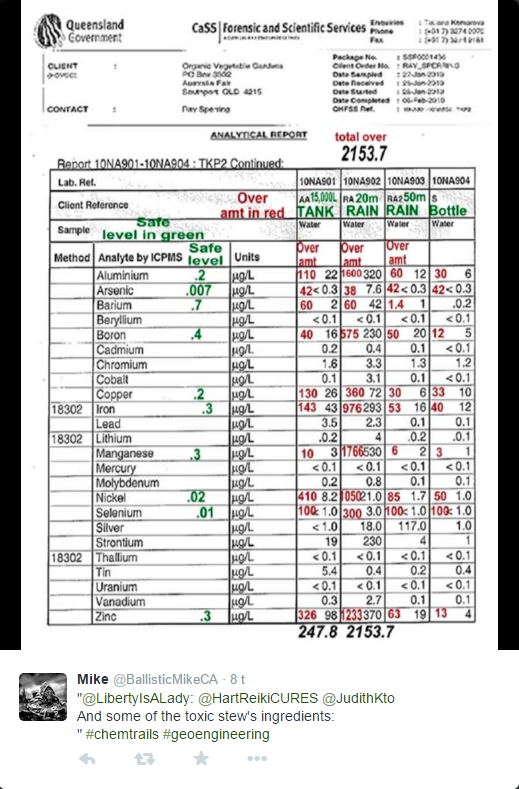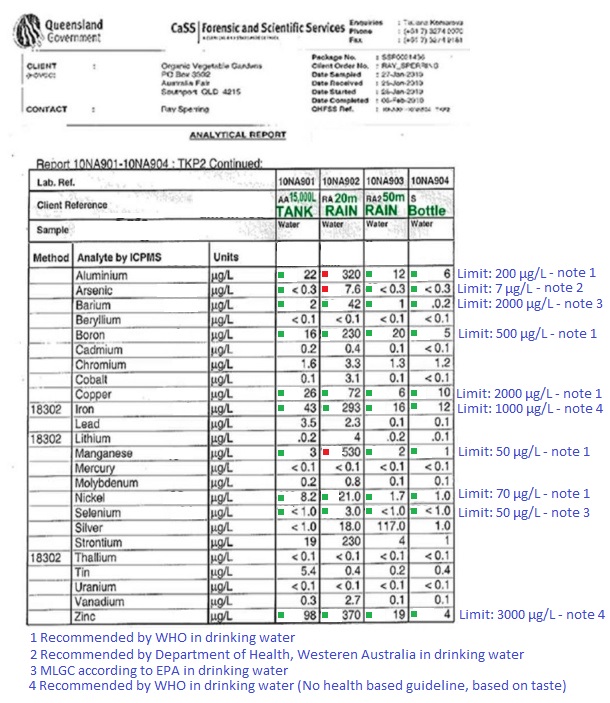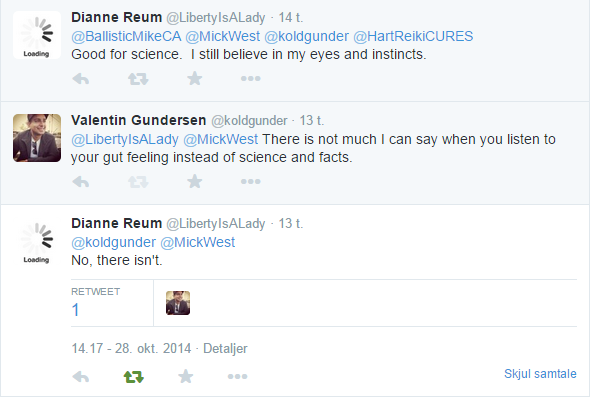Gundersen
Senior Member.
I came across the following on twitter:

I did a quick google search, and found that the first limit (0.2 µg/L) was wrong with a factor 1000. Apparently, mg/L and µg/L was confused. So I checked them all and made a corrected version.

Please note that the limits I used on the above image are not limits for rainwater, but limits for drinking water. This does however make the above rainwater sample less interesting. Besides, as has been mentioned here before, it does not state where or how the samples were taken. Rainwater are easily contaminated by almost everything in the surroundings. I am personally not aware of the correct method, though.
Manganese is however roughly 10x higher than WHO recommends it for drinking water, but this could easily be a natural contamination in the rainwater sample. 530 µg/L is roughly 0.53 ppm.

I did a quick google search, and found that the first limit (0.2 µg/L) was wrong with a factor 1000. Apparently, mg/L and µg/L was confused. So I checked them all and made a corrected version.

Please note that the limits I used on the above image are not limits for rainwater, but limits for drinking water. This does however make the above rainwater sample less interesting. Besides, as has been mentioned here before, it does not state where or how the samples were taken. Rainwater are easily contaminated by almost everything in the surroundings. I am personally not aware of the correct method, though.
Manganese is however roughly 10x higher than WHO recommends it for drinking water, but this could easily be a natural contamination in the rainwater sample. 530 µg/L is roughly 0.53 ppm.
Source: http://en.wikipedia.org/wiki/Manganese#Occurrence_and_productionManganese makes up about 1000 ppm (0.1%) of the Earth's crust, making it the 12th most abundant element there.[21] Soil contains 7–9000 ppm of manganese with an average of 440 ppm.[21] Seawater has only 10 ppm manganese and the atmosphere contains 0.01 µg/m3.[21] Manganese occurs principally as pyrolusite (MnO2), braunite, (Mn2+Mn3+6)(SiO12),[22]psilomelane (Ba,H2O)2Mn5O10, and to a lesser extent as rhodochrosite (MnCO3).
Last edited:

